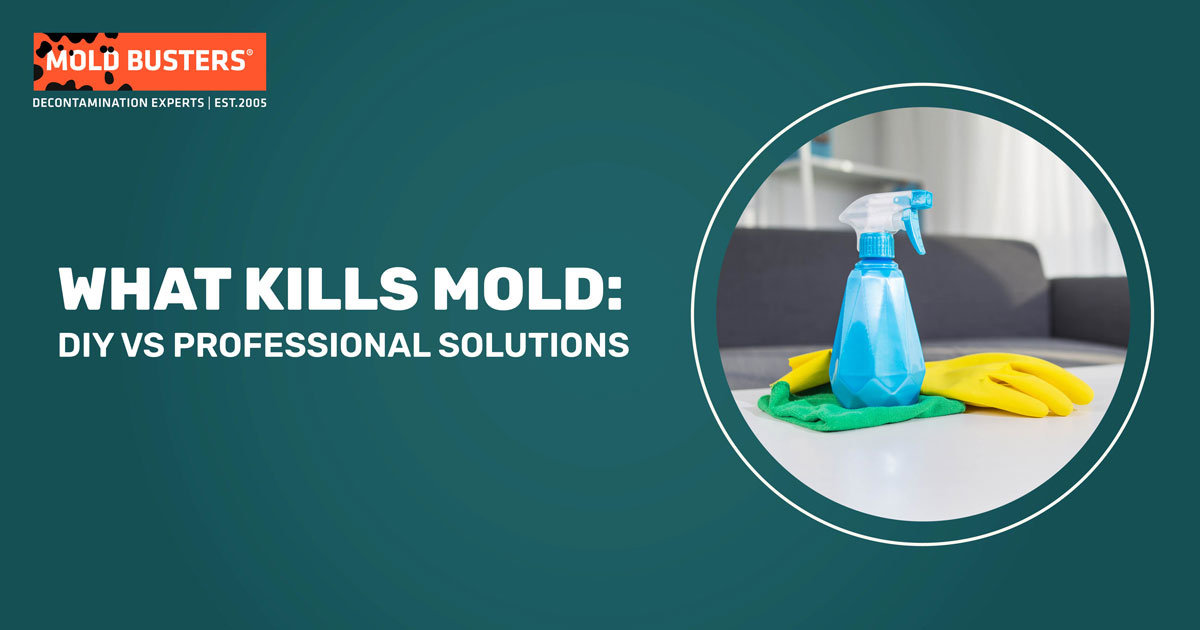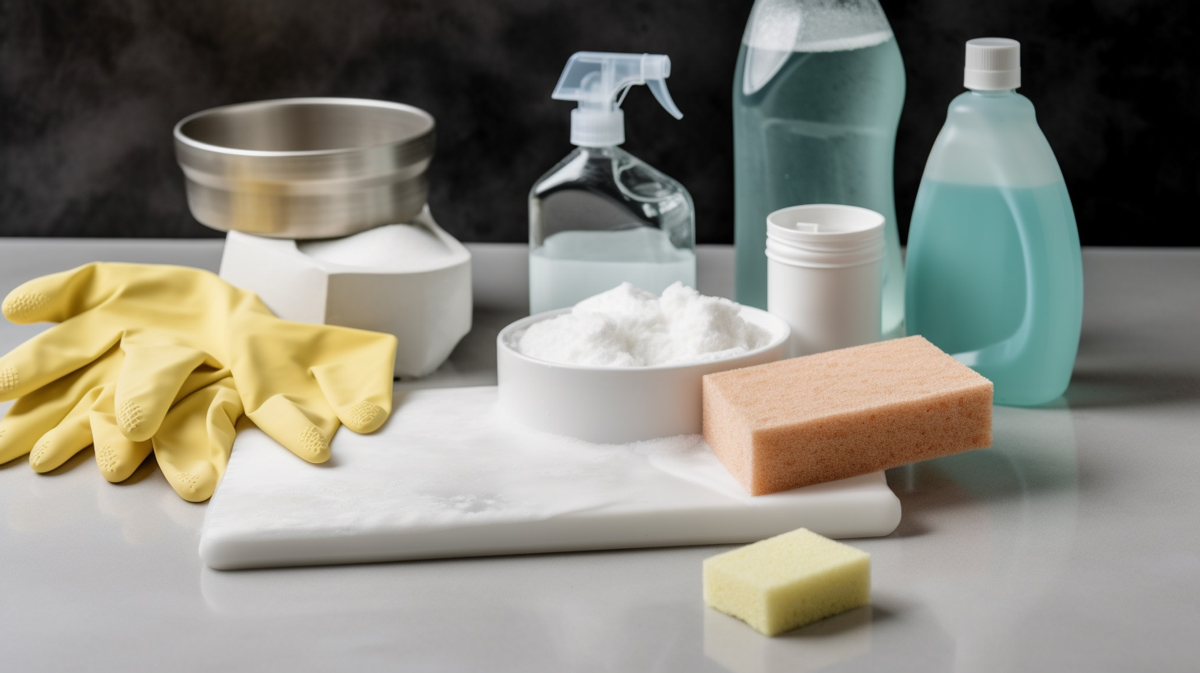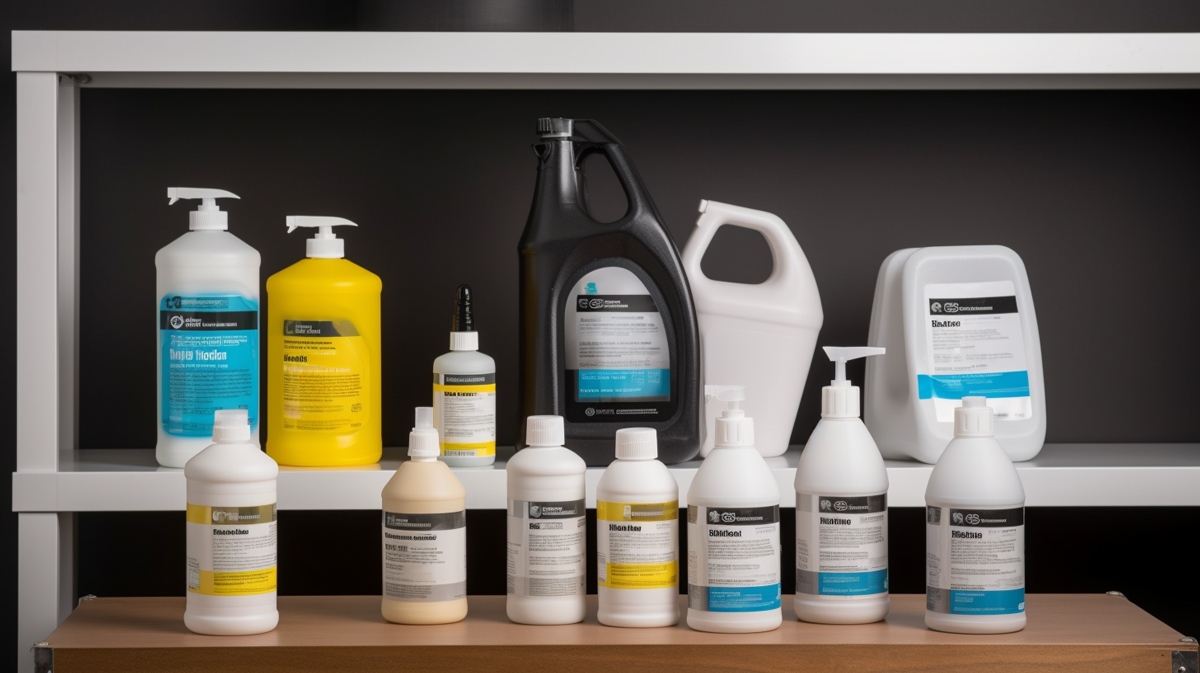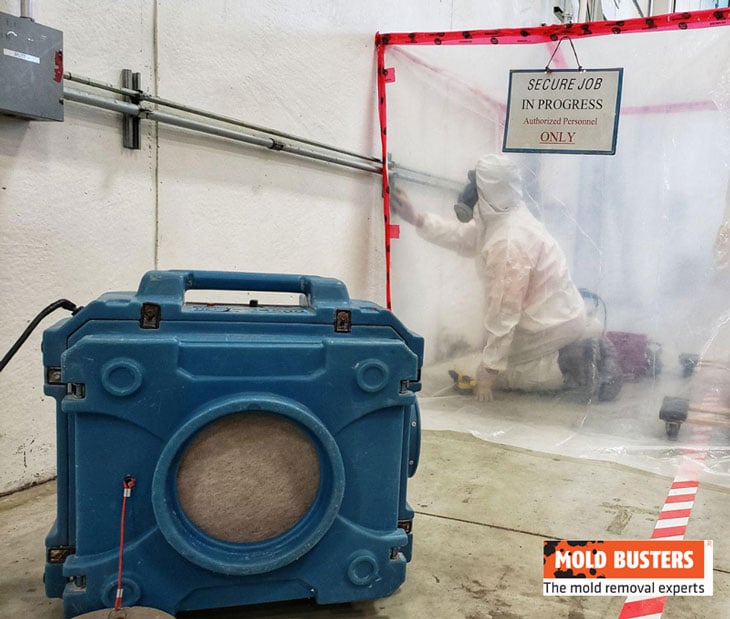What Kills Mold?
Unveil the Secrets to Effective Mold Removal with Expert Tips & Solutions
Mold growth in your home can pose significant health risks and lead to structural damage if not addressed promptly. If you’re wondering what kills mold effectively, there are several DIY and commercial options to choose from.
However, it’s crucial to consider the benefits, drawbacks, and precautions associated with each method. In this article, we’ll explore various mold removal methods, including natural remedies like white vinegar, baking soda, and tea tree oil, as well as commercial products like bleach, ammonia, and specialized mold cleaners.
We’ll also discuss the importance of addressing the root cause of mold growth, such as moisture problems, and when it’s best to consult professional mold remediation services like Mold Busters.
Key Takeaways
- Several DIY mold removal methods include white vinegar, baking soda, hydrogen peroxide, soap and water, borax, grapefruit seed extract, tea tree oil, alcohol solutions, and Lysol. These methods have varying levels of effectiveness and should be used with caution, considering their benefits, drawbacks, and precautions.
- Commercial mold removal products like bleach, ammonia, and specialized mold cleaners can be effective but may contain harsh chemicals. Mold foggers, mold-resistant building materials, air purifiers, and dehumidifiers can also help with mold control.
- Safety precautions and proper material disposal are crucial during mold remediation to avoid health risks and prevent further mold growth.
- Addressing the root cause of mold growth, such as moisture problems, is essential to prevent recurring issues.
- For larger mold infestations or when dealing with potential health risks, it’s advisable to consult professional mold remediation services like Mold Busters for comprehensive and effective solutions.
| Mold Removal Method | Benefits | Drawbacks | Precautions |
|---|---|---|---|
| White Vinegar | Natural, cost-effective, safe for most surfaces | Unpleasant odor, may not work on all mold types | Dilute with water, test on a small area, ventilate the space |
| Baking Soda | Natural, safe, effective deodorizer | Less effective for severe infestations | Mix with water or vinegar, test on a small area |
| Hydrogen Peroxide | Potent antifungal, antimicrobial | Can bleach some materials | Test on a small area, use caution when handling |
| Soap and Water | Safe, simple | Not effective for larger infestations | Suitable for non-porous surfaces only |
| Borax | Natural, inhibits mold growth | May not work on porous surfaces | Use caution when handling, can be harmful if ingested |
| Grapefruit Seed Extract | Natural, non-toxic, antimicrobial | May not be effective for all mold types | Use according to the manufacturer’s instructions |
| Tea Tree Oil | Natural antifungal | Expensive, strong odor | Suitable for non-porous surfaces, test on a small area, follow manufacturer’s instructions |
| Alcohol Solutions | Effective on non-porous surfaces | Flammable, may damage certain materials | Use caution when handling, test on a small area |
| Lysol | Widely available, kills mold spores | Not suitable for porous surfaces, may cause irritation | Follow label instructions, use caution |
Contents

Understanding Mold
Mold comes in various forms, and it’s crucial to identify the types of mold that commonly grow in homes and buildings. Some of the most common types include:
- Black mold (Stachybotrys chartarum)
- White mold (Aspergillus)
- Green mold (Penicillium)
- Orange mold (Fuligo septica)
- Yellow mold (Serpula lacrymans)
- Brown mold (Ulocladium)
- Pink mold (Aureobasidium)
Health Risks
Exposure to mold can lead to health issues, especially for individuals with allergies or compromised immune systems. Common symptoms of mold exposure include:
- Sneezing
- Runny or stuffy nose
- Itchy, watery eyes
- Skin rash
- Throat irritation
- Coughing or wheezing
- Asthma attacks
Causes of Mold Growth
Mold thrives in damp, humid environments, and several factors can contribute to its growth:
- Excess moisture from leaks or flooding
- High humidity levels
- Poor ventilation
- Mold spores present in the air
DIY Mold Removal Methods
DIY mold removal methods are generally suitable for small mold infestations and non-porous surfaces. These methods can be cost-effective and use common household items. However, it’s important to note that while they may be helpful in some cases, they may not be as effective as professional mold removal for larger or more persistent infestations. Always consider the safety and effectiveness of the method you choose.
Vinegar
Vinegar is a natural and eco-friendly option for mold removal. It’s known for its antifungal and antimicrobial properties. However, vinegar may not be as effective on porous surfaces or for more severe mold growth.
Vinegar is a mild acid that will kill roughly 82% of mold spores. While it’s one of the safest ideas on our list, it’s not 100% effective. If even one spore is left to fester, an entirely new outbreak can occur. You can, however, keep a spray bottle of vinegar handy and use it frequently around your house to prevent mold from forming in the first place.
It’s essential to use caution when handling vinegar, as it has a strong smell and can cause eye irritation. For significant mold issues, it’s recommended to consult a professional. To learn more about the effectiveness of vinegar in mold removal, check out Does vinegar kill mold?.
Baking Soda
Baking soda is another natural mold removal option that is safe and non-toxic. It can help remove mold and neutralize odors. However, it might not be as effective for larger mold infestations or certain types of mold. While baking soda is generally safe, it’s important to remember that professional mold removal services can offer more comprehensive and effective solutions.
Hydrogen Peroxide
Hydrogen peroxide is a powerful mold removal agent that can kill a variety of mold species. It’s an inexpensive and widely available option. However, hydrogen peroxide can bleach some surfaces and may not be suitable for all materials. Always test a small area first and use caution when handling hydrogen peroxide. For extensive mold issues or if you’re unsure about using hydrogen peroxide, consult a professional.
Soap and Water
Soap and water can be used for cleaning small mold patches on non-porous surfaces. While it’s a safe and simple method, it may not be effective for larger infestations or stubborn mold. In such cases, consider professional mold remediation.
Borax
Borax is a natural cleaning agent that can help remove mold and inhibit its growth. Mixed with water, borax is one of the most powerful at-home mold killers around, though it’s most effective in concentrated areas versus widespread outbreaks. It may not be as effective on porous surfaces or for more severe mold growth. Use caution when handling borax, as it can be harmful if ingested. For significant mold issues, professional assistance is advised.
Lysol
Spray it down with Lysol!
That’s the battle cry of harried teachers and worn-out mothers as soon as flu season hits. Lysol is a go-to resource when you want to kill bacteria and stop germs in their tracks. You can even find a Lysol-brand mold and mildew remover at your local drugstore.
However, like bleach, Lysol will only pause the issue momentarily. While it can be effective on some small, non-porous outbreaks, if you have a large-scale one, the regrowth will likely show up again after a while.
When using Lysol, follow the instructions on the label and use caution. For larger mold infestations or when dealing with potential health risks associated with mold exposure, it’s advisable to consult professional mold remediation services like Mold Busters.
Grapefruit Seed Extract
Grapefruit seed extract is a natural, non-toxic mold removal option with antimicrobial properties. However, it may not be effective for all types of mold or severe infestations. Consider professional mold removal services when dealing with larger mold issues.
Tea Tree Oil
Also known as melaleuca oil, tea tree oil is a key ingredient in a variety of health, wellness and beauty products. Its antibacterial, antiviral, anti-inflammatory and antifungal properties make it a valuable treatment for a range of skin conditions from acne to athlete’s foot.
Does this mean it can ward off nagging mold spores, too?
As a natural fungicide, tea tree oil is one of the most powerful “green” solutions on our list. However, at more than $10 a bottle, it’s also one of the most expensive. If you have a small, contained outbreak, you can treat it with a teaspoon of the oil mixed into one cup of water.
Keep in mind that while this might help keep a tiny colony of mold spores at bay, it’s no match against a larger outbreak. The cost of the oil alone would render any DIY effort fruitless!
Alcohol Solutions
Alcohol solutions, such as isopropyl or denatured alcohol, can be effective for killing mold on non-porous surfaces. However, they can be flammable and may damage certain materials. Use caution when handling alcohol solutions, and consider professional help for extensive mold problems.
Commercial Mold Removal Products
Commercial mold removal products can offer more effective solutions for larger mold infestations or when DIY methods are insufficient. They often contain stronger chemicals designed to combat mold growth. However, these products can also be more hazardous and may require additional safety precautions. It’s important to weigh the benefits and drawbacks of each product and consider professional help when necessary.
Mold Foggers
Mold foggers can help eliminate mold spores in the air and on surfaces. While they can be beneficial in some cases, they may not address the root cause of mold growth, such as moisture problems. It’s essential to address underlying issues and consult a professional if mold persists.
Bleach
Bleach is a common and powerful mold removal product that can be effective for killing mold on non-porous surfaces. However, bleach can also be corrosive, emit strong fumes, and damage some materials. Additionally, the chlorine in bleach cannot penetrate a porous surface, making it no match against mold that grows beneath wood or drywall.
While your walls might look clean when you scrub them down with bleach, you’re only killing the surface bacteria. The roots will continue to grow underneath and it won’t be long before those unsightly spots pop up again. For larger infestations or when bleach is not appropriate, professional mold removal is recommended.
Read more about bleach effectiveness with mold.
Ammonia
Ammonia can be effective for killing mold on hard, non-porous surfaces. It’s a strong cleaning agent, but it also comes with significant drawbacks, including strong fumes and potential health hazards. It’s crucial to never mix ammonia with bleach, as this can create toxic fumes. Due to the potential risks associated with ammonia, it’s often better and safer to rely on professional mold removal services.
Specialized Mold Cleaners
Specialized mold cleaners are formulated specifically for mold removal and can be more effective than DIY methods. These products often come with detailed instructions and safety precautions. However, they can also contain harsh chemicals and may not be suitable for all surfaces or materials. When dealing with a severe mold infestation or if you’re unsure about using a specialized mold cleaner, consider consulting a professional mold removal service like Mold Busters.
Mold-Resistant Paints and Primers
Mold-resistant paints and primers can help prevent mold growth on walls and ceilings. These products contain antimicrobial additives that inhibit mold growth. While mold-resistant paints and primers can be beneficial, they’re not a complete solution for mold problems. It’s essential to address the underlying moisture issues that led to mold growth and consult a professional if mold infestations persist or worsen.
Mold-Resistant Building Materials
Mold-resistant building materials, such as mold-resistant drywall and insulation, can help prevent mold growth in your home. While these materials can be helpful, they’re not a complete solution for mold problems. Address underlying moisture issues and consult a professional for persistent mold infestations.
Air Purifiers and Dehumidifiers
Air purifiers and dehumidifiers can help improve indoor air quality and reduce humidity, which can help prevent mold growth. While they can be beneficial, they may not be effective for eliminating existing mold infestations. In such cases, professional mold remediation services should be considered.
By understanding the benefits, drawbacks, and precautions of these DIY and commercial mold removal methods, you can make informed decisions about the best approach for your specific situation. However, it’s crucial to remember that professional mold remediation services, like Mold Busters, often provide more comprehensive and effective solutions, especially for larger mold infestations or when dealing with potential health risks associated with mold exposure.
When to Call a Professional
While DIY methods and commercial products can be effective for small mold infestations, professional help may be necessary in the following situations:
- The mold covers a large area (greater than 10 square feet).
- Mold growth persists after multiple cleaning attempts.
- You suspect mold in hard-to-reach areas, such as inside walls, air ducts, or crawl spaces.
- You have health concerns or allergies related to mold exposure.
At Mold Busters, we provide professional mold services in Ottawa and Montreal, ensuring the highest quality and safety standards. Our experienced team can help you identify and remediate mold problems while providing guidance on prevention and maintenance. Contact us for a consultation and let us help you create a healthier living environment.
Safety Precautions and Material
Before attempting to remove mold, it’s important to take safety precautions to protect yourself and minimize the risk of spreading mold spores. Here are some essential safety measures to follow when dealing with mold:
- Wear protective gear: Use gloves, a mask (N95 or higher), and goggles to protect yourself from mold exposure. Wear long sleeves and pants to cover your skin.
- Isolate the affected area: Close doors and windows to prevent mold spores from spreading to other parts of your home. Seal off air vents and cover furniture or items in the room with plastic sheeting.
- Use proper ventilation: Ensure adequate ventilation in the work area by using exhaust fans or opening windows, but avoid directing air towards moldy surfaces.
- Avoid cross-contamination: Do not track mold spores through your home by walking on contaminated surfaces. Remove shoes and clothing before leaving the work area, and wash them immediately.
- Discard contaminated materials properly: Seal contaminated items, such as rags, brushes, and disposable protective gear, in plastic bags before disposal.
Disposal Post-Remediation Measures
After successfully removing mold, it’s crucial to properly dispose of contaminated materials and take necessary steps to prevent mold regrowth. Here are some guidelines for post-remediation disposal and measures:
- Discard porous materials: Porous materials, such as drywall, insulation, and fabrics, may need to be discarded if they cannot be adequately cleaned and dried.
- Seal contaminated items in plastic bags: Place moldy items, cleaning materials, and disposable protective gear in heavy-duty plastic bags, seal them tightly, and label them as “mold-contaminated.”
- Dispose of contaminated items according to local regulations: Check with your local waste management facility or municipality for guidelines on disposing of mold-contaminated materials.
- Clean and sanitize non-porous items: Non-porous items, such as metal, glass, and plastic, can be cleaned and sanitized using appropriate mold removal methods. Ensure they are completely dry before returning them to their original location.
- Prevent mold regrowth: Address the underlying moisture issues that led to mold growth, such as leaks, humidity, and poor ventilation. Regularly inspect your home for signs of mold and take prompt action if mold is detected.
By following proper safety precautions, material disposal, and post-remediation measures, you can ensure a safe and effective mold removal process. Remember, if you need professional assistance for mold remediation or have concerns about mold exposure, don’t hesitate to contact Mold Busters in Ottawa and Montreal for expert help. We also offer a virtual inspection service for those who prefer an online consultation.
FAQ
What is the best way to prevent mold growth in my home?
The most effective way to prevent mold growth is by controlling moisture and humidity levels in your home. This includes fixing leaks, improving ventilation, using a dehumidifier, and cleaning regularly to remove mold spores before they can grow. For more tips on mold prevention, visit How to Prevent Mold resource.
Can I remove mold myself, or should I hire a professional?
For small mold infestations and non-toxic mold types, DIY mold removal methods can be effective. However, for larger infestations, toxic mold types, or when dealing with potential health risks, it’s advisable to consult professional mold remediation services like Mold Busters. Professionals have the necessary equipment, knowledge, and experience to ensure a thorough and safe mold removal process.
Are there any natural alternatives to commercial mold removal products?
Yes, there are several natural alternatives for mold removal, such as white vinegar, baking soda, hydrogen peroxide, borax, grapefruit seed extract, and tea tree oil. These methods have varying levels of effectiveness and should be used with caution, considering their benefits, drawbacks, and precautions.
Conclusion
Mold is a common problem in homes and buildings, but it can be effectively removed and prevented with the right methods and products. DIY mold removal methods, such as vinegar, baking soda, and hydrogen peroxide, are suitable for small infestations on non-porous surfaces. Commercial mold removal products, like bleach, ammonia, and specialized mold cleaners, can be used for more severe cases or when DIY methods are insufficient.
However, it’s important to remember that some mold infestations may require professional assistance. If you’re dealing with persistent mold growth or have health concerns related to mold exposure, consider contacting a professional mold remediation company like Mold Busters.
By understanding what kills mold and how to prevent its growth, you can create a healthier living environment for you and your family.

Get Special Gift: Industry-Standard Mold Removal Guidelines
Download the industry-standard guidelines that Mold Busters use in their own mold removal services, including news, tips and special offers:
Published: April 3, 2023 Updated: August 3, 2023

Written by:
John Ward
Account Executive
Mold Busters
Fact checked by:
Michael Golubev
CEO
Mold Busters



